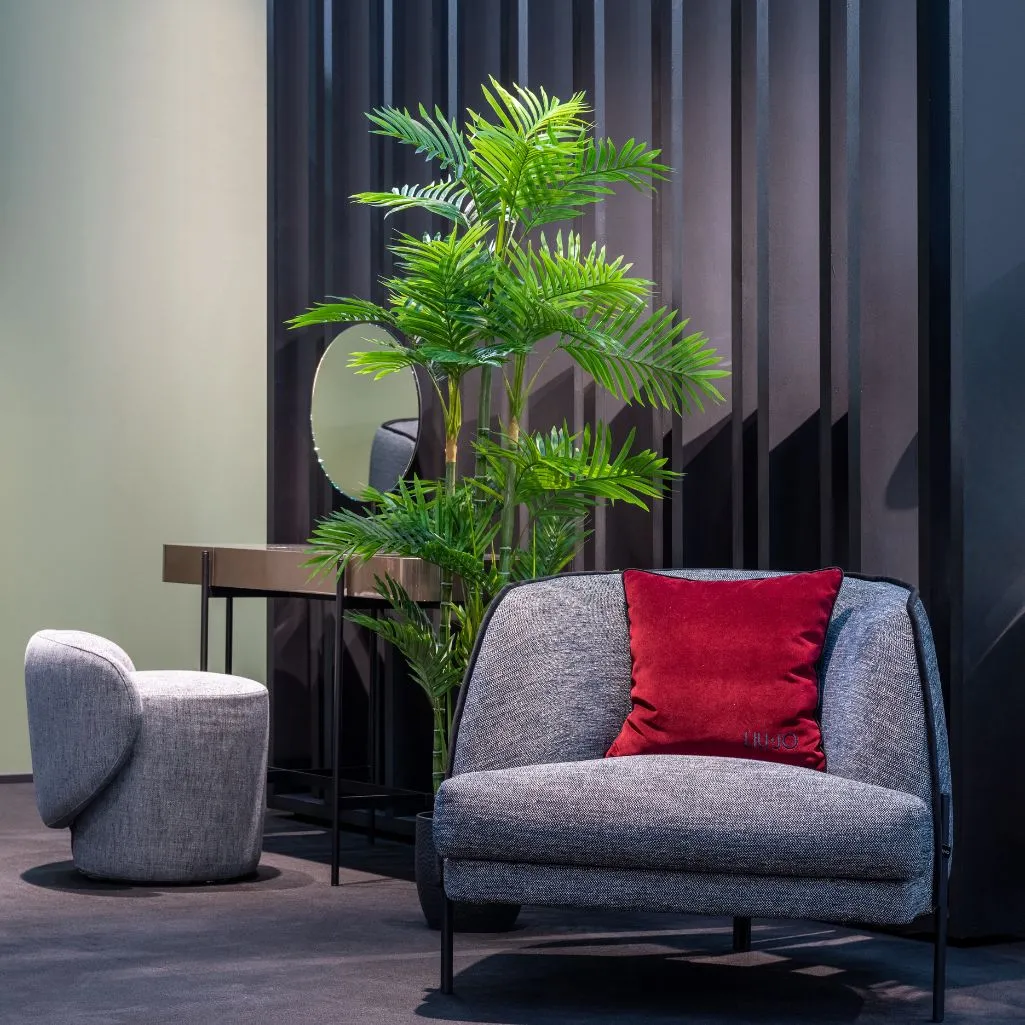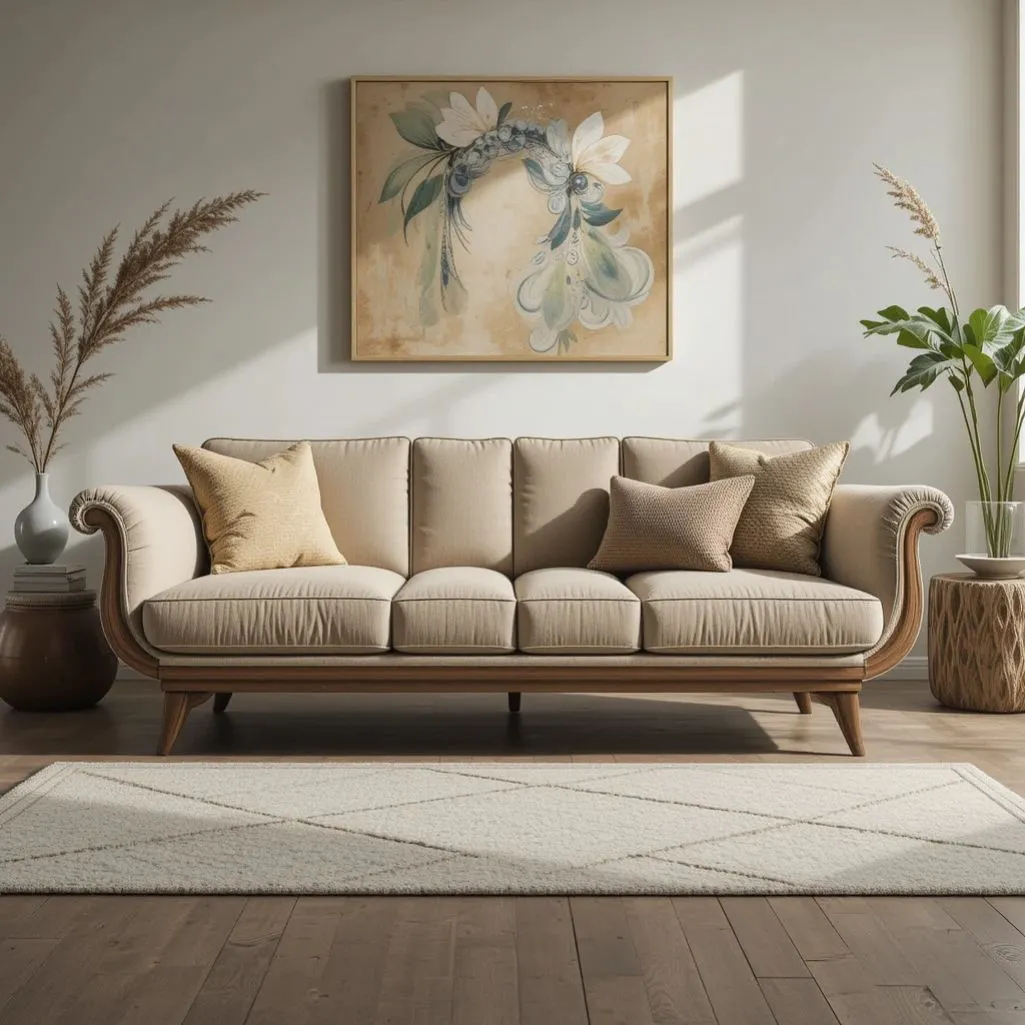In today’s fast-paced, high-gloss world, where sleek, symmetrical, and sanitized interiors dominate Instagram and Pinterest boards, the rise of the Wabi Sabi couch represents a quiet rebellion. It’s not about flash or flawless aesthetics, it’s about embracing imperfection, honoring authenticity, and finding comfort in the natural passage of time.
Rooted in the profound Japanese philosophy of Wabi Sabi, this approach invites you to cultivate a home that breathes, evolves, and holds memories, not just objects.
This long-form guide explores the emotional depth, timeless appeal, and soulful styling of the Wabi Sabi couch and how you can bring its transformative presence into your living space.
🧘 What is Wabi Sabi?
Before you understand the appeal of the Wabi Sabi couch, you must first appreciate the philosophy that defines it.
Wabi Sabi (侘寂) is a centuries-old Japanese aesthetic rooted in Zen Buddhism. It encourages acceptance of transience and imperfection. Unlike Western ideals that prioritize symmetry and flawlessness, Wabi Sabi cherishes the old, the worn, the cracked, and the beautifully broken.
🌿 Origins of Wabi Sabi:
- Wabi originally meant solitude in nature, but now suggests rustic simplicity and mindfulness.
- Sabi reflects the beauty of age, weathering, and impermanence.
From tea ceremonies using irregular, handcrafted bowls to weathered garden stones, Wabi Sabi teaches us to see beauty in what others might discard.
🛋️ What is a Wabi Sabi Couch?
A Wabi Sabi couch is not pristine or perfectit’s emotional, sensory, and expressive. It’s the couch with a sun-faded armrest, the slightly uneven hand-stitching, or the linen slipcover with gentle wrinkles that reveal its natural fabric origin.
✨ Defining Features:
- Natural Materials: Linen, cotton, wool, rattan, reclaimed wood, hemp
- Organic Textures: Slubby fibers, exposed grain, visible knots
- Aged Details: Subtle wear, patinas, frayed edges
- Earthy Color Palette: Soft taupe, beige, dusty rose, sage, clay, ivory
- Low-Profile Frames: Wide, grounded, and minimalistic silhouettes
Instead of screaming for attention, a Wabi Sabi couch whispers comfort, inviting you to unwind and be yourself.
💬 The Emotional Appeal: Why Imperfection Feels Like Home
We’ve been conditioned to pursue perfection smooth finishes, sterile whites, flawless alignment. But real life is messy, imperfect, and unpredictably beautiful.
A Wabi Sabi couch embraces all that. The slightly creased upholstery reminds you of weekend lounging. The faded fabric nods to years of use and memories made. It’s a space that welcomes relaxation, vulnerability, and real life.
In embracing a Wabi Sabi couch, you’re making peace with imperfection.
🎨 How to Style Your Home with a Wabi Sabi Couch

The Wabi Sabi couch is just one piece of a much broader design ethos. Here’s how to design your living room or your entire homearound it:
🪵 1. Use Raw, Natural Materials
- Reclaimed wood coffee tables
- Terracotta pottery
- Handwoven wool rugs
🧶 2. Embrace Imperfection
- Let cracks, chips, and inconsistencies show
- Incorporate repaired or visible mended items (e.g., kintsugi-inspired ceramics)
🌾 3. Choose Earth-Inspired Colors
- Warm greys, driftwood brown, moss green, cloudy whites
- Avoid bold patterns opt for tone-on-tone layering
🕯️ 4. Maximize Light and Shadow
- Use natural lighting with sheer curtains
- Embrace soft, indirect shadows that dance across textures
🍂 5. Keep it Minimal, but Not Cold
- Focus on intentional simplicity
- Choose fewer but meaningful objects
New Ideas: Lounge Modern Organic Couches (Comfy & Chic Looks)
🔍 Materials that Define the Wabi Sabi Couch
The materials you choose define the soul of your Wabi Sabi couch. These aren’t showroom-new pieces, they’re honest, tactile, and expressive.
🧵 Best Upholstery Options:
- Linen: Breathable, soft, and naturally crinkled
- Cotton Canvas: Durable and textural
- Wool: Cozy, imperfect weave
🪑 Frame Materials:
- Reclaimed wood: Often unfinished or lightly treated
- Wrought iron: When used, it’s patinated and aged
🌿 Decorative Add-ons:
- Hand-dyed pillows
- Embroidered throws with faded stitching
- Dried floral arrangements in rough clay vases
🛒 How to Shop for a Wabi Sabi Couch

Looking for the perfect Wabi Sabi-inspired couch? It requires a shift in mindset. Rather than browsing for something pristine, look for pieces that offer character, craft, and comfort.
✅ Key Shopping Tips:
- Look for Artisan Work: Seek hand-stitched or hand-built designs
- Inspect Imperfections: A faded spot or worn edge may add to the charm
- Support Ethical Makers: Choose sustainable or reclaimed materials
- Buy Vintage: Thrift shops, antique stores, or heritage brands are gold mines
🔍 Trusted Sources:
- Etsy (for handmade and vintage)
- The Citizenry
- Muji
- Local furniture makers
- Japanese home goods stores
💡 Benefits of Choosing a Wabi Sabi Couch
Beyond its style, a Wabi Sabi couch brings philosophical and practical benefits.
🧠 Mental Wellness:
- Encourages mindfulness and acceptance
- Reduces the pressure to maintain ‘perfect’ appearances
- Creates a calming, grounded atmosphere
🌍 Sustainability:
- Advocates reuse, repair, and recycling
- Lowers carbon footprint through fewer replacements
💰 Budget-Conscious:
- Durable materials reduce the need for frequent upgrades
- Vintage pieces often cost less than new designer options
🔄 Wabi Sabi vs. Other Design Styles
| Design Style | Focus | Aesthetic Traits |
| Wabi Sabi | Imperfection & Transience | Organic, aged, asymmetrical |
| Minimalism | Clarity & Simplicity | Sleek, clean, clutter-free |
| Japandi | Function + Serenity | Scandinavian simplicity meets Japanese calm |
| Boho | Creativity & Color | Pattern-rich, eclectic, global |
| Rustic Farmhouse | Homely & Practical | Reclaimed wood, cozy textures |
Wabi Sabi uniquely centers on emotional depth and nature’s poetry.
❌ Common Mistakes to Avoid
Even though Wabi Sabi is rooted in non-perfection, it still requires intentional design choices.
1. Mistaking Neglect for Patina
Wabi Sabi isn’t about dirty or brokenit’s about natural wear that enhances charm.
2. Overusing Decor
Too many ‘imperfect’ items create chaos. Curate mindfully.
3. Ignoring Comfort
Wabi Sabi couches are meant to be used, loved, and lounged on, never stiff or solely decorative.
🏡 How to Maintain Your Wabi Sabi Couch

The beauty of Wabi Sabi lies in low-maintenance authenticity but a few mindful practices help it age gracefully.
🧼 Care Tips:
- Use natural cleaners to protect fibers and finishes
- Let linen slipcovers wrinkle naturally only if needed
- Rotate cushions to even out wear
- Embrace visible mending instead of covering up
Over time, your couch becomes a journal of your home life, marked with use and love.
New Ideas: Cottage Home (Cozy + Chic): Modern Minimalist Magic
📖 Real-Life Inspirations
Here’s how others have embraced the Wabi Sabi couch lifestyle:
“We bought a handmade linen couch from a Kyoto artisan. After a year, the fabric faded unevenly from the sun but that just made it more beautiful. Our guests always say it feels like sitting in a cloud of calm.”
“I was nervous about getting a second-hand couch. But every imperfection told a story and now, it’s the coziest spot in our home.”
Your home should evolve with you and your couch should reflect that journey.
Conclusion
And that’s the beauty of a Wabi Sabi couch. It’s more than a place to sit, it’s a reminder to embrace imperfection, natural textures, and the quiet charm of authentic living. If it’s a linen slipcover with a soft wrinkle, a hand-carved wooden frame, or cushions that tell the story of everyday life, each detail adds to its timeless comfort.
A cozy corner becomes a sanctuary, not because it’s flawless, but because it’s real. So take a seat, sip some tea, and enjoy the simple joy of “perfectly imperfect” style. Share your own Wabi Sabi living room moments. We’d love to see how you make them yours.

Hi, I’m Zadie Smith. A passionate writer specializing in crafting witty pickup lines and clever rizz phrases to help spark unforgettable conversations.

